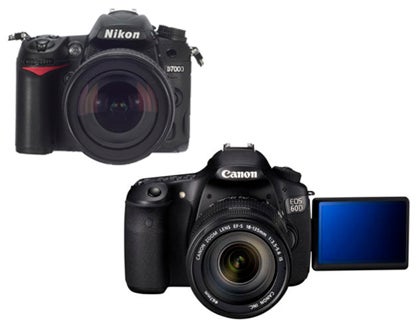Canon EOS 60D vs Nikon D7000: Image Quality
Canon EOS 60D vs Nikon D7000: Image Quality
60D vs D7000: Image Quality: Tone & Exposure
Canon’s latest iFCL metering system is very clever indeed. As electronic sensors are typically more sensitive to red light, its dual-layered approach has one red & green and one blue & green layer. The two exposures are combined, compared and, quicker than you know it, an exposure is made utilising each of the 63-zones.
By comparison there’s Nikon’s brand new 2,016-pixel RGB sensor that actually does more than just consider metering. By using such a vast number of pixels it can relay shape information to the sensor and deduce what the scene being exposed for is, thus making a more finely-tuned exposure adjustment.
However, the proof is in the pudding, or so they say. And it has to be said that Nikon’s latest offering is rather over-zealous at exposing for the mid-levels and can often result in over exposure. Where highlights are concerned it’s best to bracket exposures and often exposure compensation intervention was required for certain scenes.
Canon’s iFCL offering generally provided a more well-rounded and accurate exposure with more ‘room’ for the shadow areas.
60D vs D7000: Image Quality: Colour & White Balance
This is where the 60D’s shots take on a whole different life as the punch of colours delivered straight from camera is the more pleasing of the two. The D7000’s images are still exceptional, but seem more subtly coloured straight from the camera, especially when viewing side by side on each cameras’ rear LCD screens.
Colour balance from the Nikon is slightly warm, with a reddish tinge not uncommon, though not problematically so. Colour can also be slightly inconsistent at higher ISO settings even under consistent lighting.
The Canon has a more neutral and accurate base colour balance, with the occasional ‘cold’ cast, but is generally the more pleasing of the two.
Of course, any level of post-production can take place outside of the camera and there are options to tweak JPEG processing in-camera as you please, so these standard settings can be adjusted to suit your preference.
60D vs D7000: Image Quality: Sharpness & Detail
In both instances the kit lenses – Nikon 18-105mm f/3.5-5.6 and Canon 18-135mm f/3.5-5.6 – work relatively well, but it’s when adding faster, more responsive lenses that things really step up a gear. The majority of this test was carried out using both Canon’s and Nikon’s 24-70mm f/2.8 lenses head to head. The rise in autofocus speed from doing so was immediately obvious and the final results benefit from a sustained wide aperture and sharper ‘sweet spot’ when stopping down a little.
Detail-wise the final Canon images are obviously slightly larger and that lends itself better to enlargment or cropping at lower ISO settings. However, the D7000’s JPEGs straight from camera are better sharpened and hold detail better at the higher ISO settings.
60D vs D7000: Image Quality: ISO & Image Noise
The two cameras’ sensors are slightly different sizes (Nikon’s is 23.6 × 15.6mm compared to Canon’s smaller 22.3 × 14.9mm), and with Canon’s higher resolution the theory would suggest it would suffer from more image noise issues. However, this really isn’t the case until reaching the much higher ISO settings. Sitting Canon and Nikon shots side by side it’s otherwise hard to tell the difference between them when solely assessing image noise.
In fact both cameras provide exceptional image quality, especially at the lower ISO sensitivities. Saying that, the Canon does slip into more noticeable noise reduction (and therefore softness) from ISO 1600 and above, which gives the D7000’s high ISO images the perception of greater sharpness. At ISO 3200-6400 the 60D’s images are muddied and less detailed than the D7000’s, yet both show an interfering level of image noise. The ‘Hi’ settings, which extend to ISO 12,800 for the Canon and ISO 12,800-25,600 for the Nikon exhibit considerable image noise.
60D vs D7000: Image Quality: Raw vs JPEG
Both cameras provide software for Raw processing in the box – Nikon View NX 2 for the D7000 and Canon Digital Photo Professional for the 60D.
Generally speaking the two cameras show relatively little difference from one another in terms of sharpness, though there is significantly more colour noise present throughout both the ISO ranges.
From ISO 800 and above the 60D shows greater presence of colour noise than each of the D7000’s comparisons, and this is especially notable from ISO 6400 and above.





